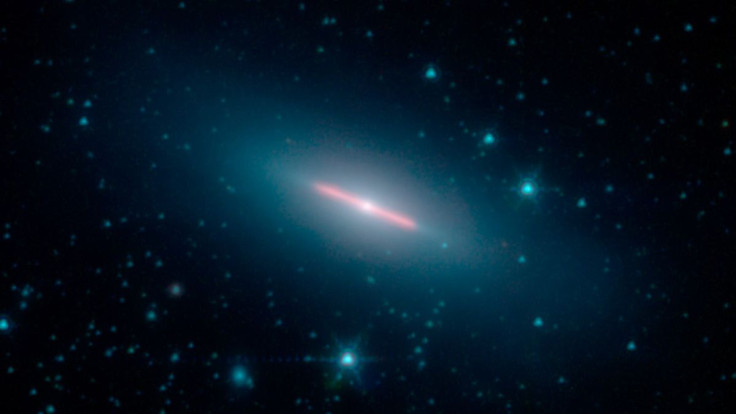NASA Spitzer Discovers Star Wars-Inspired Galaxy, Looks Like 'Lightsaber Floating In Space'

NASA’s Spitzer Space Telescope has captured a stunning image of a distant galaxy. Since the image was taken from the galaxy’s side, it looked like a red lightsaber floating in space.
The galaxy photographed by Spitzer has been identified as NGC 5866. It is located about 44 million light-years from Earth and has a diameter of roughly 60,000 light-years.
Unlike most galaxies photographed by Spitzer and NASA’s other space telescopes, NGC 5866 doesn’t face Earth. Instead, from Earth’s and Spitzer’s point of view, only the edge of the galaxy can be seen. Because of this, the distinct features of the galaxy, such as the coiled arms commonly found in spiral galaxies, were not visible.
Due to its orientation from Earth’s viewpoint, NGC 5866 resembled the beam of a red lightsaber used by Sith Lords in the “Star Wars” film franchise. According to NASA, the color of the galaxy corresponded to the infrared wavelength emitted by its dust clouds. This wavelength was detected by Spitzer through its Infrared Array Camera.
Although NGC 5866 was photographed by Spitzer, the space agency noted that studying the nature of the galaxy was challenging because it doesn’t face Earth. An image of its complete form cannot be reconstructed like what the space agency did with the Milky Way galaxy.
“Trying to learn about the history and shape of NGC 5866 is challenging due to its orientation,” NASA stated. “Our view of this galaxy is somewhat like our view of the Milky Way galaxy: Because Earth lies inside the Milky Way, we can see it only edge-on rather than face-on.”
“But our proximity to the rest of the Milky Way has allowed astronomers to reconstruct what our galaxy would look like viewed face-on,” the agency added.
According to NASA, Spitzer took the image of NGC 5866 during its “cold mission,” a phase in Spitzer’s voyage when its instruments were still being chilled by liquid helium coolant. This substance ran out in 2009, around six years after its official launch. Although this caused several of Spitzer’s cameras and other instruments to stop working, it was still able to take various stunning images of space.
© Copyright IBTimes 2024. All rights reserved.





















